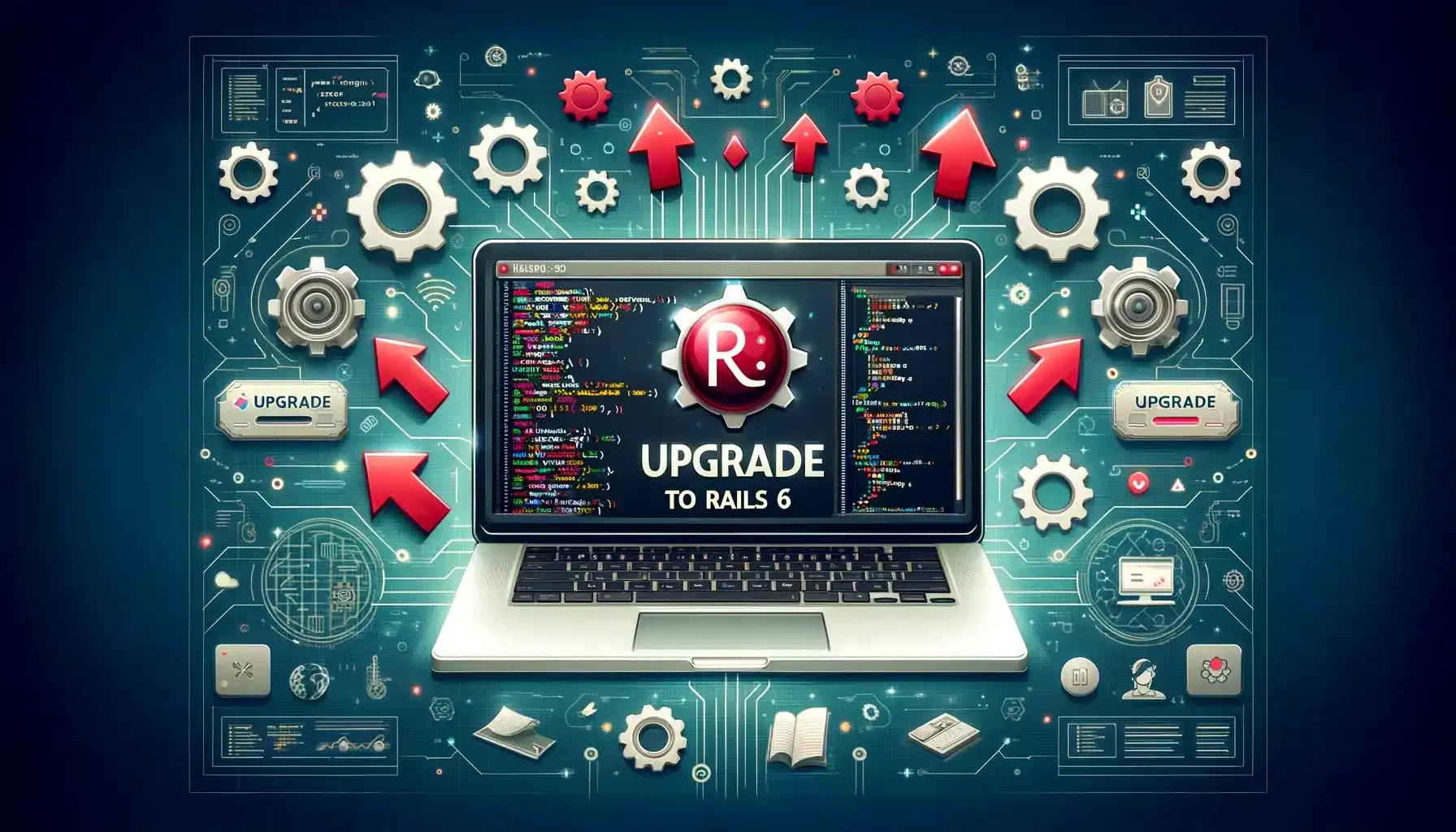FastAPI vs Django: Which Python Web Framework Should You Choose in 2025?
FastAPI or Django - which Python framework is a right fit for your project? Explore their performance, features, and usability to decide.

Manikandan Rajkumar
Full Stack Software Engineer
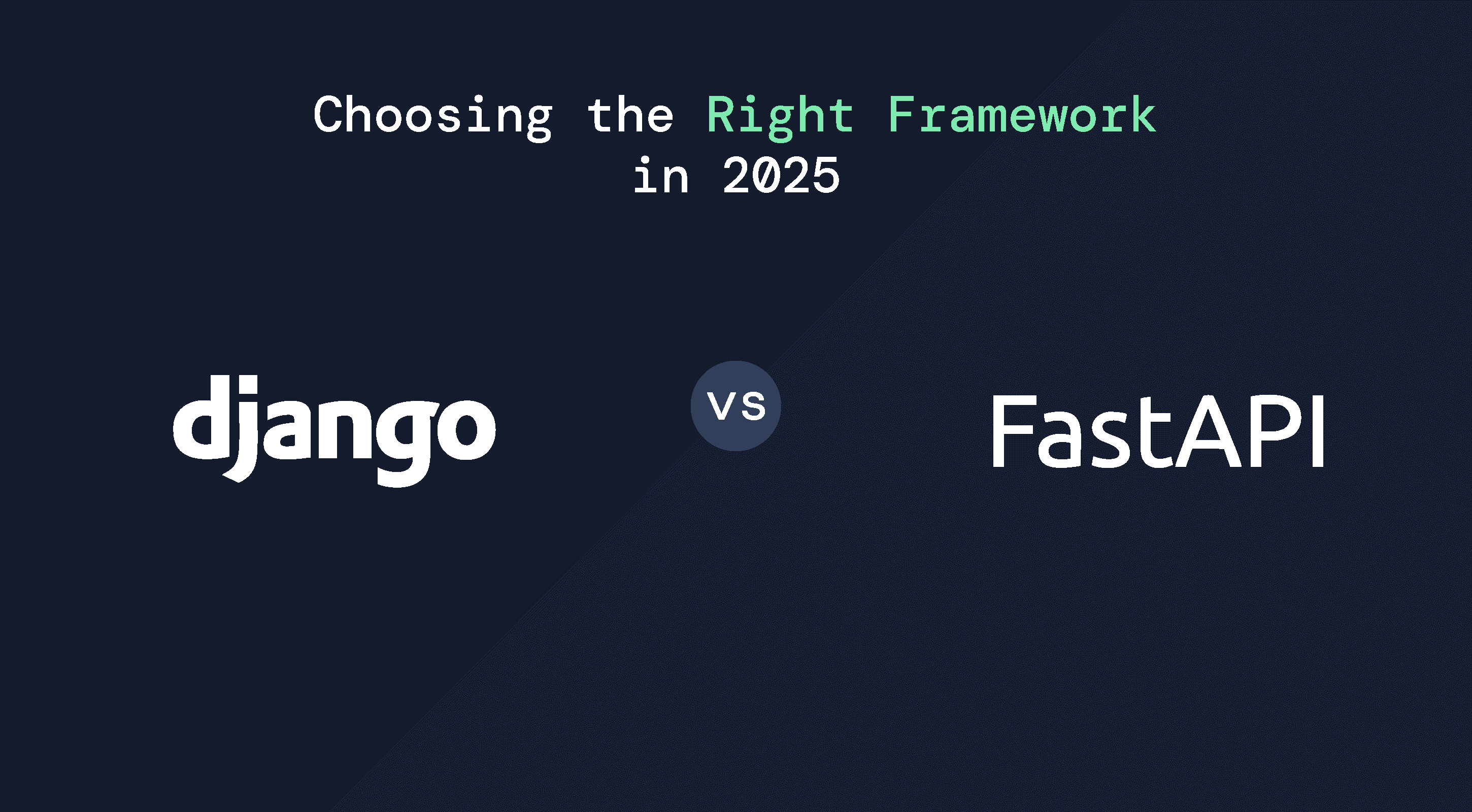
Choosing the right Python website framework can make or break your next project. With businesses demanding faster development cycles and scalable apps, developers often find themselves asking: “Which is better, Django or FastAPI in 2025?” Both frameworks dominate the Python ecosystem but serve very different needs.
This blog compares Django vs. FastAPI so you can decide which framework is the right fit for your project in 2025.
Framework Philosophies
Django: Built for Speed and Structure
Introduced in 2005, Django is a high-level, batteries-included web framework that prioritizes rapid development and clean, pragmatic design.
Its core philosophy is clear: “for perfectionists with deadlines.”
Django follows the principle of convention over configuration, offering developers a consistent and time-saving development experience.
Out of the box, Django includes an integrated ORM, robust authentication system, templating engine, and a powerful admin interface — making it an excellent choice for building full-featured web applications with minimal setup.
FastAPI: Designed for Modern, API-First Development
Released in 2018, FastAPI is a modern, high-performance framework tailored for building APIs with Python 3.7+ using standard type hints.
It’s built with a strong focus on developer experience and speed, leveraging asynchronous programming, automatic validation, and interactive API documentation powered by OpenAPI.
By combining Python’s type system with tools like Pydantic and Starlette, FastAPI enables faster development, fewer bugs, and cleaner code, making it ideal for scalable, API-driven applications.
Why use FastAPI?
1. Exceptional Performance
FastAPI is built on Starlette for the web layer and Pydantic for data parsing and validation.
Its native use of async/await enables non-blocking execution, making it one of the fastest Python frameworks, often rivaling the performance of Node.js and Go in API scenarios.
2. Automatic Interactive API Docs
With FastAPI, documentation is no longer an afterthought.
It automatically generates interactive API docs via Swagger UI and ReDoc, based on your route definitions and type hints. This not only improves developer experience but also reduces the time spent maintaining documentation.
3. Built-in, Type-Safe Data Validation
With Pydantic, FastAPI validates request and response data out of the box. It ensures type safety and minimizes the risk of runtime errors.
4. Modern, Pythonic Development Experience
FastAPI encourages writing code using Python type hints, aligning perfectly with modern Python development practices. This results in cleaner, more maintainable code that is easy to understand and auto-complete friendly, and a big win for productivity.
5. Asynchronous Capabilities
FastAPI natively supports asynchronous programming. It’s ideal for building real-time apps or integrating with asynchronous data sources like NoSQL databases or third-party APIs.
Project Structure Comparison
Django: Structured and Opinionated
A typical Django project follows a convention-driven structure, which makes it easy to onboard developers and maintain consistency across teams. Django projects often look like this:
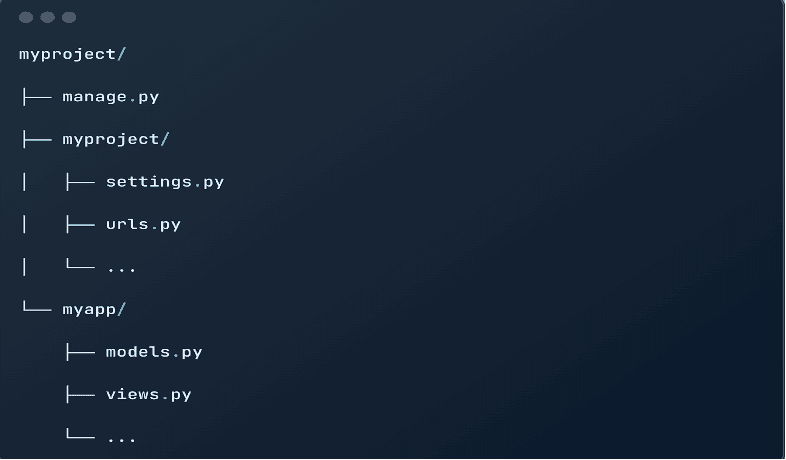
Django encourages a modular approach with apps and provides clear separation between settings, URLs, models, and views. This structure is standardized and ideal for full-stack applications.
FastAPI Typical Structure
FastAPI offers more flexibility in project layout, giving developers the freedom to design a structure that fits their application’s scale and complexity. A common FastAPI project structure looks like:
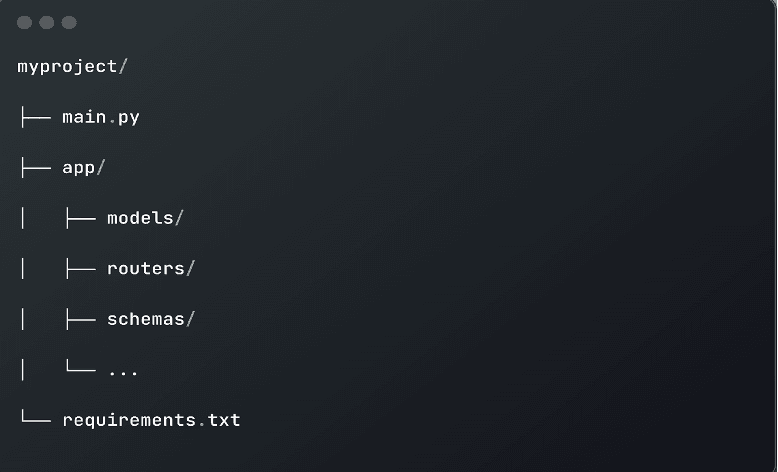
FastAPI projects often separate concerns by organizing models, routers (endpoints), and schemas (Pydantic models) into distinct folders. This modular approach is great for API-first or microservice-oriented applications but requires upfront architectural decisions.
Data Validation: Django ORM vs FastAPI Pydantic Models
Both Django and FastAPI offer robust mechanisms for data validation, but they approach it very differently.
Django Data Validation
Django uses its ORM and forms system for data validation:
Field Validation:
Each field in a Django model or form can have validators (like EmailValidator, RegexValidator).
Methods for Validation:
to_python(): Converts raw data to the correct type, raising ValidationError if it fails.
validate(): Handles field-specific validation.
run_validators(): Runs all validators and aggregates errors.
clean(): Runs to_python(), validate(), and run_validators() in order.
Example:
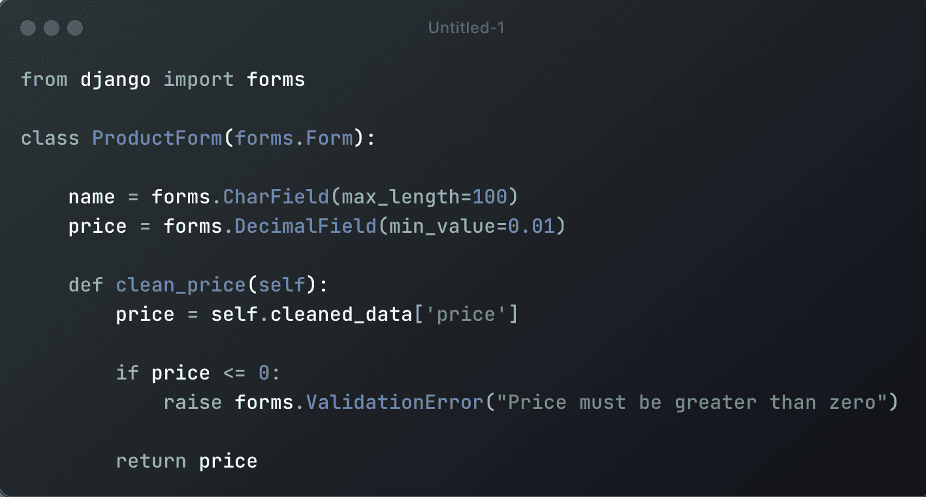
Validation errors are raised as ValidationError exceptions, which Django handles and displays in forms or API responses.
FastAPI Data Validation with Pydantic
FastAPI uses Pydantic models for validation, leveraging Python type hints:
Field Validation: Define types and constraints directly in Pydantic models.
Automatic Validation: FastAPI automatically validates incoming data against the Pydantic model, returning detailed errors if validation fails.
Custom Validation: Use Pydantic’s @validator and (in v2) @model_validator for custom and cross-field validation.
Example:
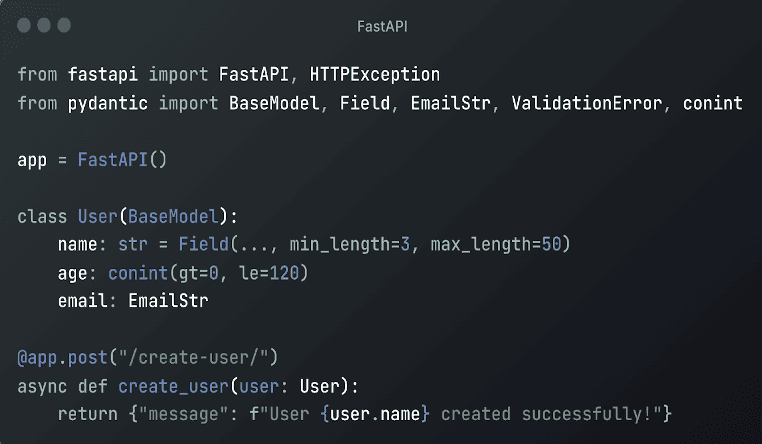
If invalid data is sent, FastAPI returns a 422 Unprocessable Entity response with detailed error messages.
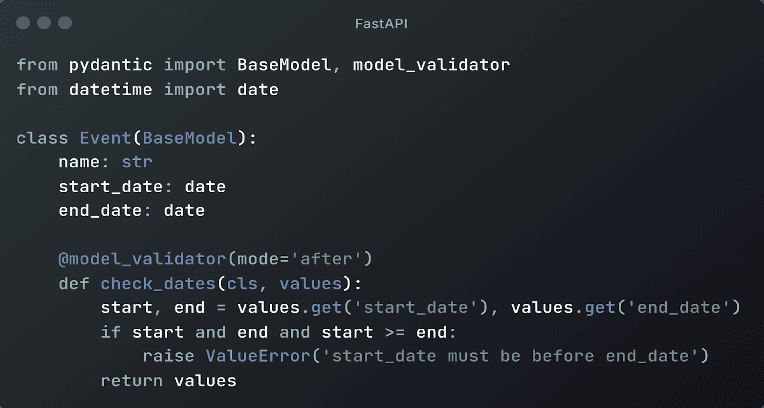
API Development
Django REST Framework Example
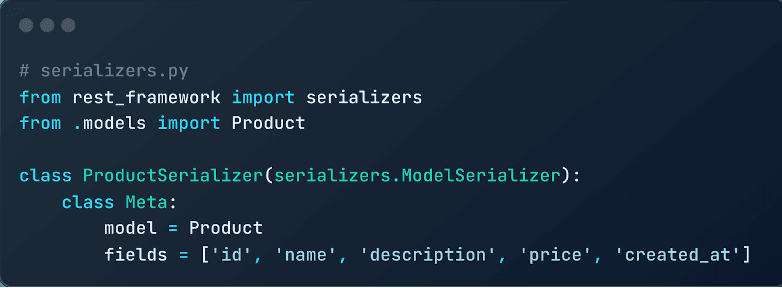
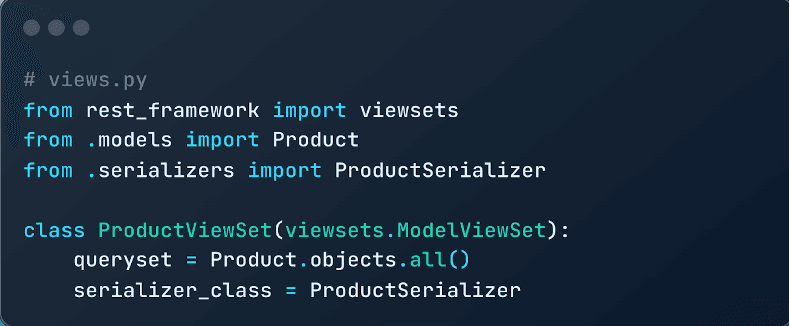
FastAPI API Example
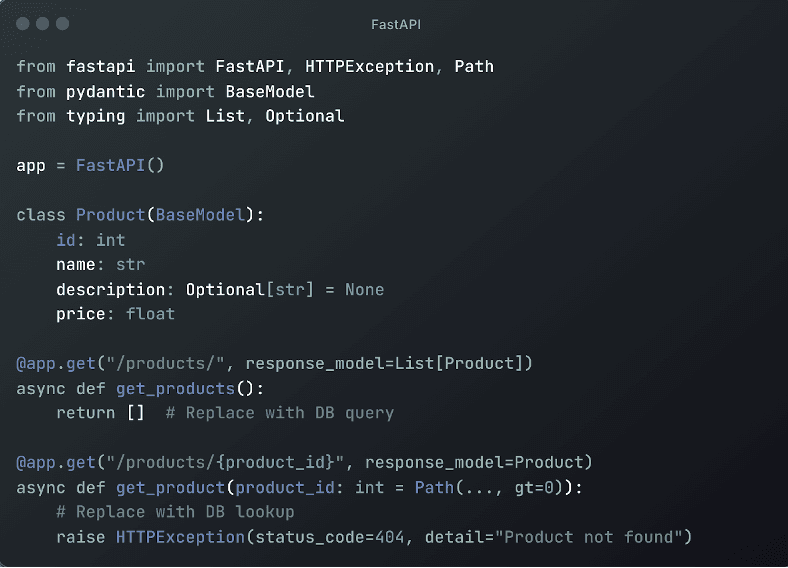
FastAPI automatically generates interactive docs at /docs and /redoc without extra setup.
Feature Comparison: Django (ORM/Forms) vs FastAPI (Pydantic)
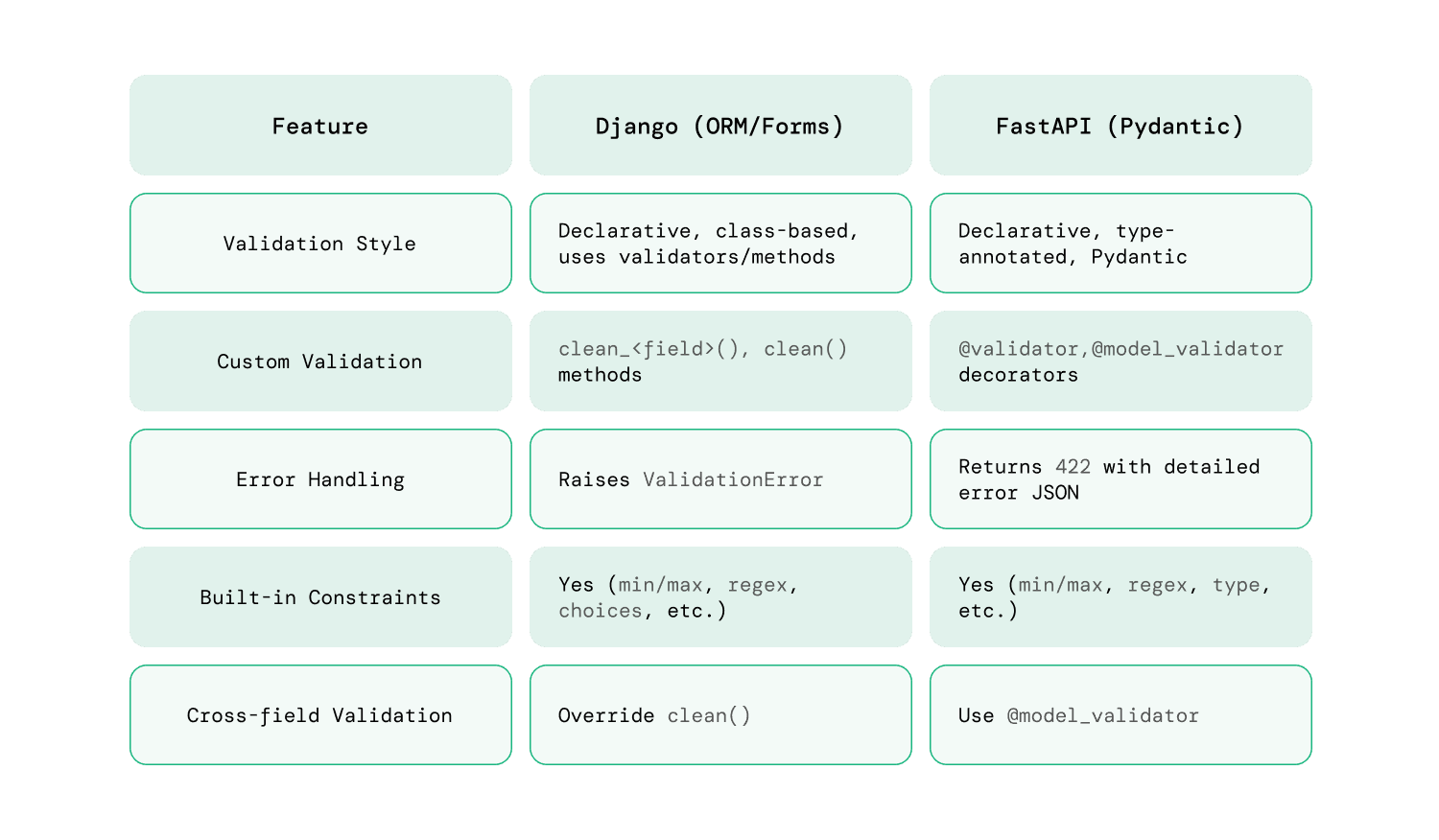
When to Choose FastAPI?
FastAPI is a powerful framework tailored for modern, API-centric development. It's a great fit in scenarios where performance, flexibility and developer experience are key.
Choose FastAPI if:
You're building a RESTful API or microservice
Example: A backend for a mobile app or a microservice in a distributed system.
You need asynchronous capabilities for scalability
Example: A real-time notification system or a data ingestion service.
You want to use modern Python features like type hints and async I/O
Example: A Python-based service that integrates with external APIs using asyncio.
You prefer auto-generated, interactive API documentation
Example: Internal APIs for a SaaS product that require easy developer onboarding.
FastAPI excels in high-performance API applications, async tasks, and developer-first environments where minimal boilerplate and speed are priorities.
When to Choose Django?
Django is a full-stack web framework designed for building feature-rich applications quickly with a focus on stability and scalability.
Choose Django if:
You need to build a full-featured web application quickly
Example: A startup MVP with user auth, forms, and templated UI.
You want an out-of-the-box admin dashboard
Example: An internal dashboard for managing customers or content.
Your project involves extensive CRUD operations
Example: A blog, inventory system, or CMS with complex forms and data models.
You prefer a monolithic architecture for simpler deployment and development
Example: A small team managing a single deployable unit for an eCommerce platform.
Django is ideal when you need to move fast, avoid third-party complexity, and want everything (from ORM to admin) available out of the box.
Ready to build?
Choose the python website framework that fits your project goals, team strengths, and scalability needs.
Django for full-stack speed and built-in tools.
FastAPI for high-performance, async-first APIs.
Both are powerful and now you know when to use each.
If you’re still weighing your options or need expert hands to get your project moving, RailsFactory can help. With 18+ years of experience building high-performance web applications across industries, we can help you choose the right framework, handle development, or even augment your existing team to speed up delivery.


